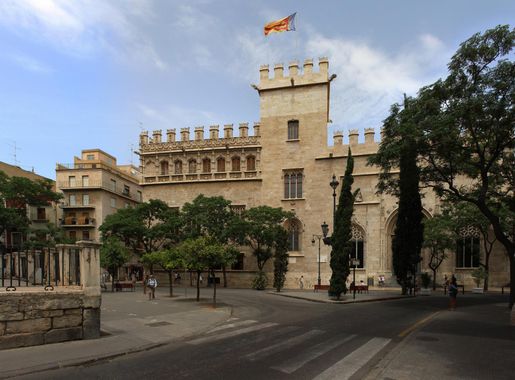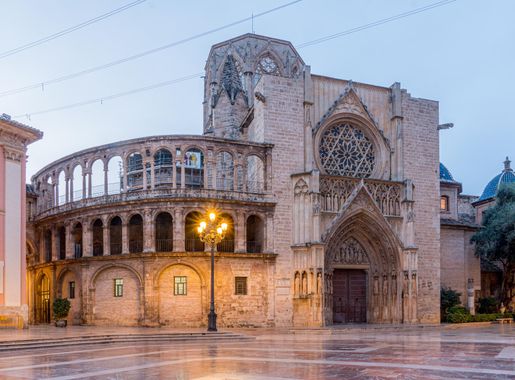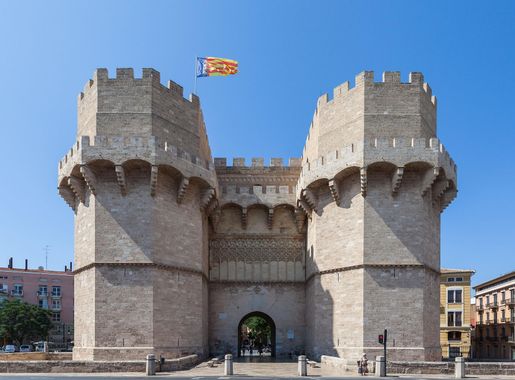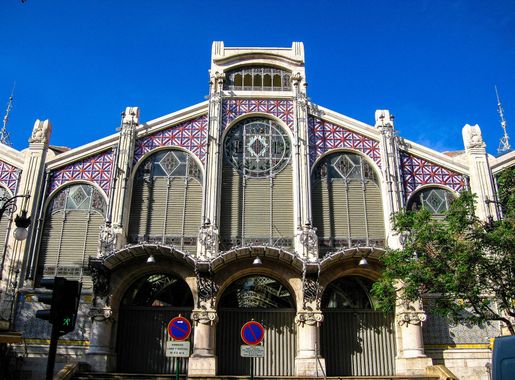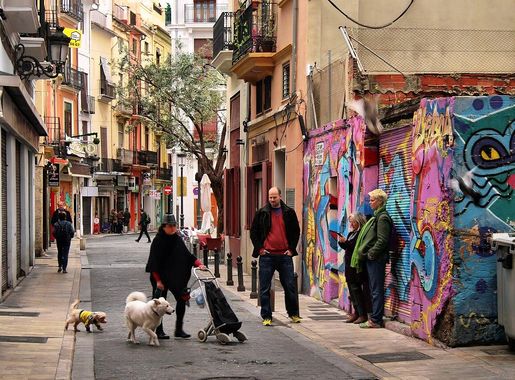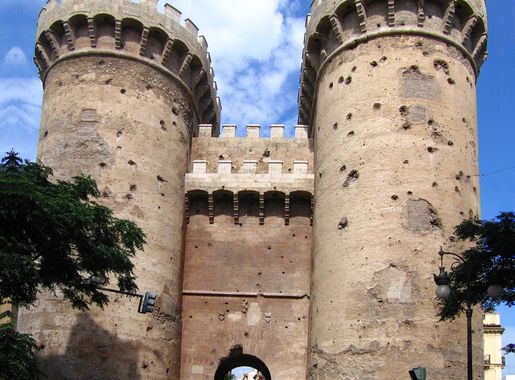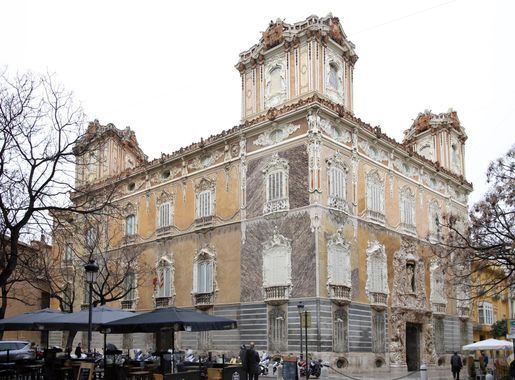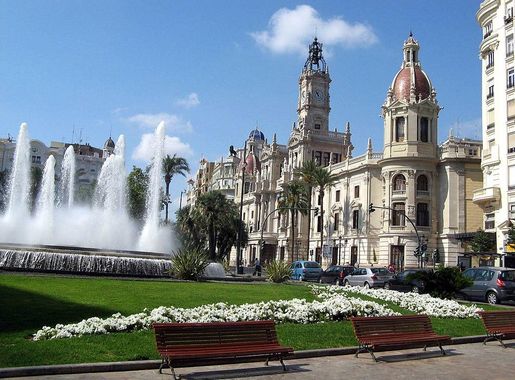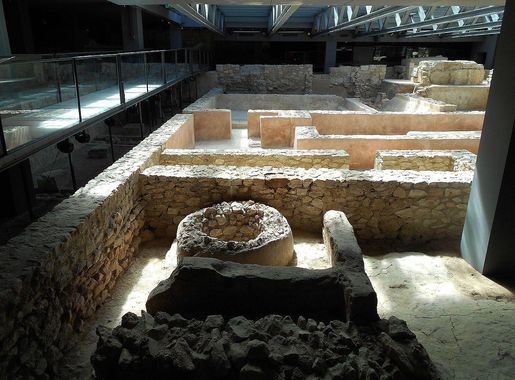
The Timeless Charm of Ciutat Vella, Valencia
Discover the timeless charm of Ciutat Vella in Valencia, Spain – a captivating blend of historical landmarks, vibrant culture, and modern-day vibrancy.
Ciutat Vella, the Old Town of Valencia, is a captivating blend of historical landmarks, vibrant culture, and modern-day vibrancy. This neighborhood is a maze of charming narrow streets and stunning plazas, each telling a story of its own. As you wander through this area, you'll encounter an array of architectural wonders, from Gothic cathedrals to medieval towers, each reflecting the rich history of Valencia. The heart of Ciutat Vella is the Plaza de la Virgen, a bustling square that has been the center of public life for centuries. Here, you can find the beautiful Valencia Cathedral and its famous Miguelete Tower, offering panoramic views of the city. Nearby, the UNESCO World Heritage-listed Lonja de la Seda, or Silk Exchange, showcases stunning gothic architecture and is a must-visit for history enthusiasts. Ciutat Vella isn't just about history; it's also a vibrant cultural hub. The neighborhood is home to an eclectic mix of museums, galleries, and theaters. The Central Market of Valencia, one of the largest in Europe, offers a sensory overload with its fresh produce, local delicacies, and vibrant atmosphere. Don't miss the chance to indulge in traditional Spanish cuisine at one of the many tapas bars and restaurants scattered throughout the area. As the sun sets, Ciutat Vella transforms into a lively nightlife destination. From cozy bars to trendy nightclubs, there's something for everyone. The neighborhood's streets come alive with music, laughter, and the clinking of glasses, making it the perfect place to experience the local spirit of Valencia.
Local tips in Ciutat Vella
- Wear comfortable shoes; the cobblestone streets can be uneven and challenging for long walks.
- Visit the Central Market early in the morning to experience it at its liveliest and avoid the crowds.
- Climb the Miguelete Tower for breathtaking views of Valencia, but be prepared for a steep climb.
- Check the local event calendar for festivals and cultural events happening in the Plaza de la Virgen.
- Many attractions offer discounted entry on Sundays; take advantage of this to explore more on a budget.
The Timeless Charm of Ciutat Vella, Valencia
Ciutat Vella, the Old Town of Valencia, is a captivating blend of historical landmarks, vibrant culture, and modern-day vibrancy. This neighborhood is a maze of charming narrow streets and stunning plazas, each telling a story of its own. As you wander through this area, you'll encounter an array of architectural wonders, from Gothic cathedrals to medieval towers, each reflecting the rich history of Valencia. The heart of Ciutat Vella is the Plaza de la Virgen, a bustling square that has been the center of public life for centuries. Here, you can find the beautiful Valencia Cathedral and its famous Miguelete Tower, offering panoramic views of the city. Nearby, the UNESCO World Heritage-listed Lonja de la Seda, or Silk Exchange, showcases stunning gothic architecture and is a must-visit for history enthusiasts. Ciutat Vella isn't just about history; it's also a vibrant cultural hub. The neighborhood is home to an eclectic mix of museums, galleries, and theaters. The Central Market of Valencia, one of the largest in Europe, offers a sensory overload with its fresh produce, local delicacies, and vibrant atmosphere. Don't miss the chance to indulge in traditional Spanish cuisine at one of the many tapas bars and restaurants scattered throughout the area. As the sun sets, Ciutat Vella transforms into a lively nightlife destination. From cozy bars to trendy nightclubs, there's something for everyone. The neighborhood's streets come alive with music, laughter, and the clinking of glasses, making it the perfect place to experience the local spirit of Valencia.
Iconic landmarks you can’t miss
Plaça de la Reina
Experience the vibrant atmosphere and rich history of Plaça de la Reina, the heart of Valencia's cultural and social life.
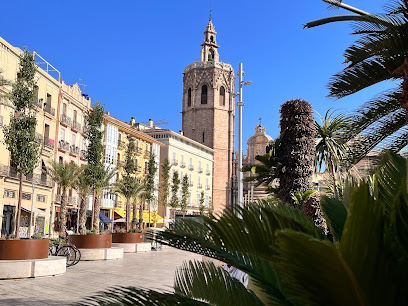
La Lonja de la Seda de Valencia
Explore La Lonja de la Seda, a UNESCO World Heritage site in Valencia, showcasing Gothic architecture and the city's rich silk trading history.
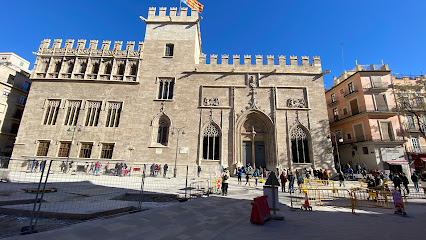
Porta de la Mar
Discover the enchanting Porta de la Mar, a historical gateway in Valencia that connects you to the city's rich cultural heritage and vibrant atmosphere.
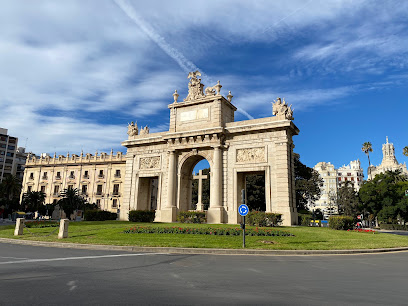
El Micalet
Discover the stunning El Micalet, Valencia's historical bell tower, offering breathtaking views and a glimpse into the city's rich cultural heritage.

Plaça de la Santa Creu
Explore the historic Plaça de la Santa Creu in Valencia, a vibrant square filled with rich culture, stunning architecture, and local charm.
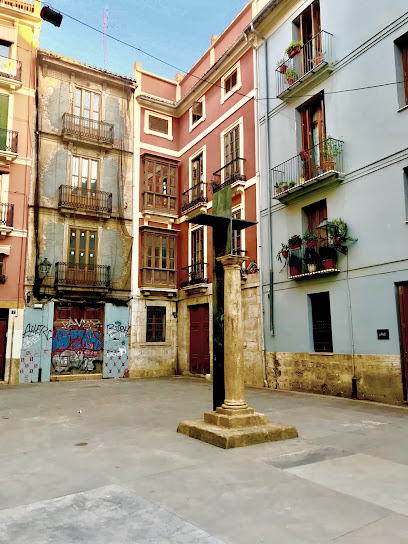
City walls of València
Discover the historical grandeur of the City Walls of Valencia, where history meets breathtaking views in the heart of Spain's vibrant city.
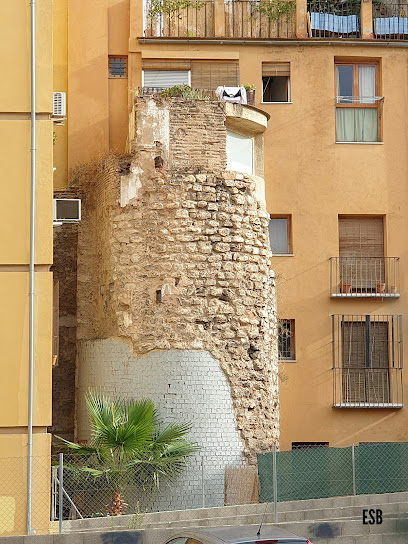
Placa Fundacional de la Ciutat de València
Explore the rich history and vibrant culture of Valencia at the stunning Plaça Fundacional de la Ciutat de València, a must-see tourist attraction.
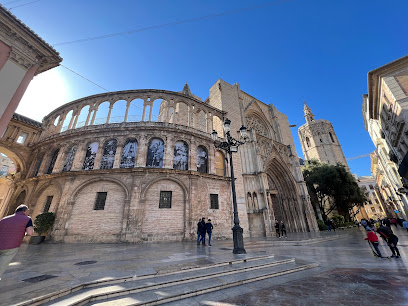
Plaça del Correu Vell
Explore the historical charm of Plaça del Correu Vell, a vibrant square in Valencia's Ciutat Vella, rich in culture and architectural beauty.
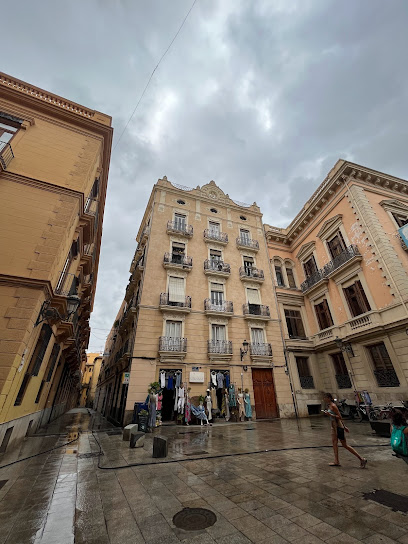
Palacio Escrivà y Boïl
Explore the architectural beauty and rich history of Palacio Escrivà y Boïl in Valencia's heart, a must-see for every traveler.
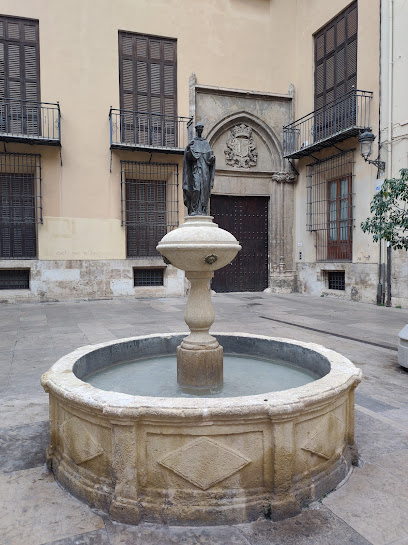
EDIFICIO GIL-TECLES
Explore the rich history and stunning architecture of Edificio Gil-Tecle, a key landmark in Valencia's vibrant Ciutat Vella district.
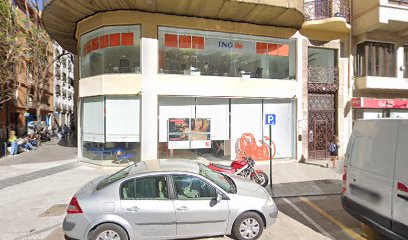
Unmissable attractions to see
Galeria del Tossal (muralla islàmica)
Explore Valencia's rich Islamic heritage at Galeria del Tossal, an open-air museum showcasing historical remnants of the ancient Islamic wall.
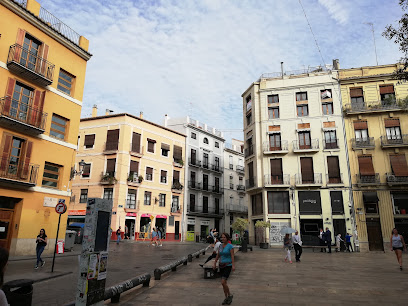
Palau de l'Almirall
Explore the architectural beauty and rich history of Palau de l'Almirall, a stunning gem in Valencia's vibrant Ciutat Vella.
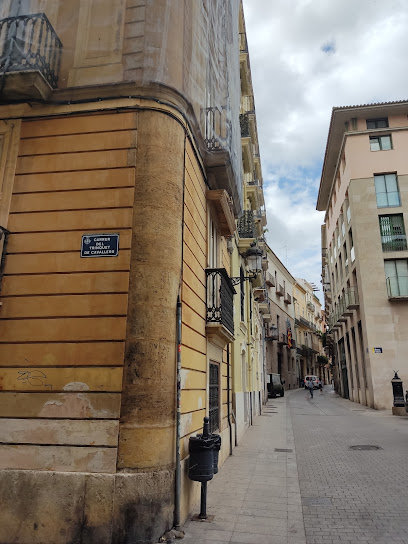
Placa Fundacional de la Ciutat de València
Explore the enchanting Placa Fundacional de la Ciutat de València, a historical square blending culture, architecture, and vibrant local life.
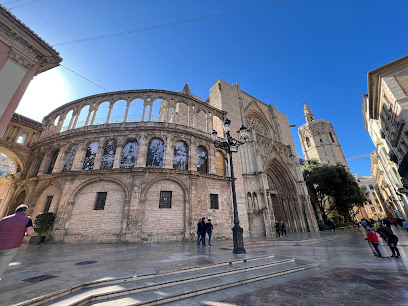
Mosaic Cat Image
Discover the vibrant and whimsical Mosaic Cat Image in Valencia, a must-see tourist attraction that embodies the city's artistic spirit.
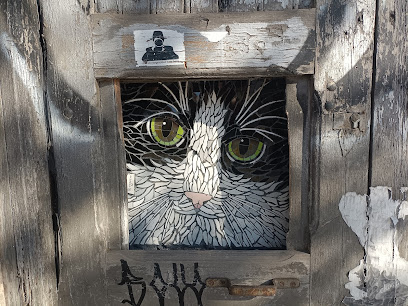
Casa dalle finestre artistiche, quadri sulla facciata
Discover the artistic beauty of Casa dalle finestre artistiche, a captivating architectural gem in Valencia's historic Ciutat Vella district.
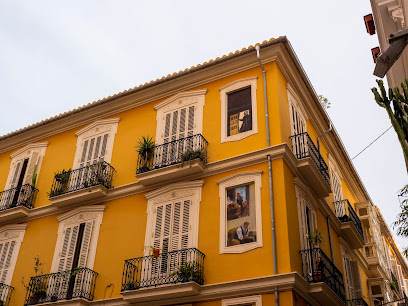
Palacio Escrivà y Boïl
Explore the stunning architectural beauty and rich history of Palacio Escrivà y Boïl in the heart of Valencia's Ciutat Vella.
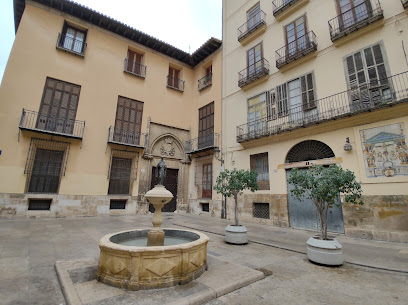
placa de la Marato
Experience the vibrant culture and history at Placa de la Marato, a lively square in the heart of Valencia's Ciutat Vella district.

Urbane Kunst/ Streetart
Discover the vibrant street art of Valencia at Urbane Kunst, a captivating outdoor gallery showcasing local creativity and cultural expression.
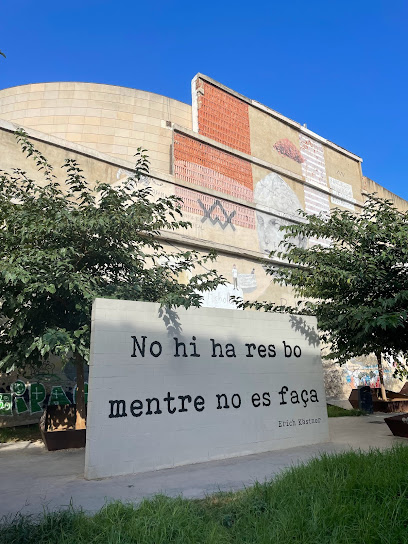
Essential places to dine
Sagardi Valencia Centro
Experience authentic Basque flavors at Sagardi Valencia Centro – where tradition meets culinary excellence in the heart of Valencia.
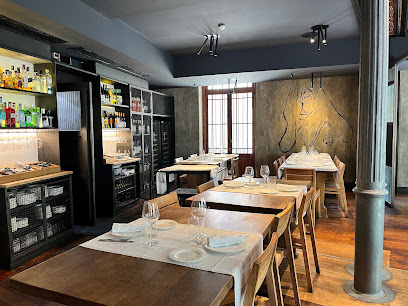
Le Favole Ristorante
Discover authentic Italian flavors at Le Favole Ristorante in Valencia's vibrant Ciutat Vella district – where every dish tells a story.
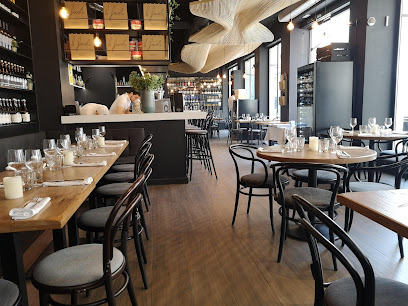
Restaurant Secret
Discover Restaurant Secret: A Mediterranean culinary experience blending tradition with innovation in the heart of Valencia.
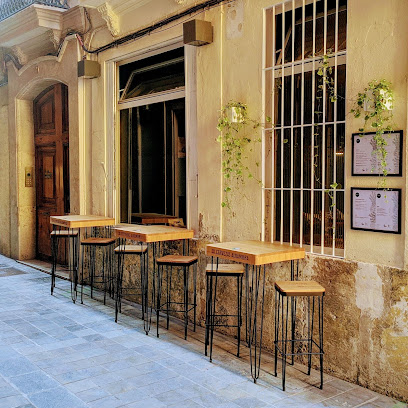
La Papardella
Experience authentic Italian flavors at La Papardella in Valencia's charming Ciutat Vella district.
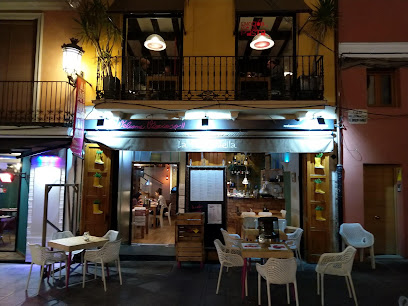
Navarro
Experience authentic Mediterranean flavors at Navarro in Valencia, where fresh seafood meets traditional Spanish cuisine in a welcoming atmosphere.
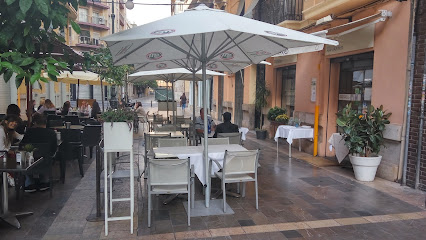
LALOLA Restaurante
Discover authentic Valencian flavors at LALOLA Restaurante - your destination for Mediterranean delights in the heart of Valencia.
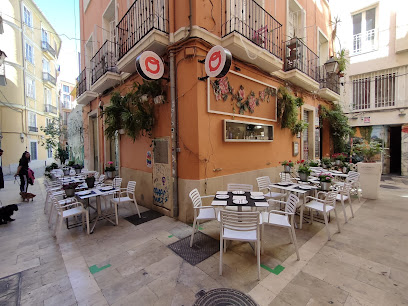
Lia València
Experience exquisite Valencian cuisine at Lia València – where tradition meets innovation in a charming setting.
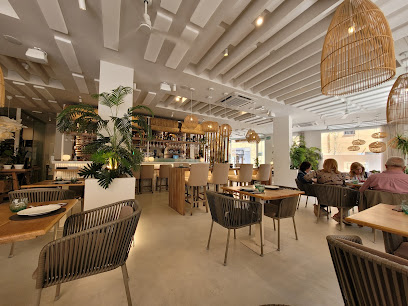
Restaurant Helen Berger València
Experience authentic Valencian cuisine at Restaurant Helen Berger, where tradition meets modernity in every delicious dish.
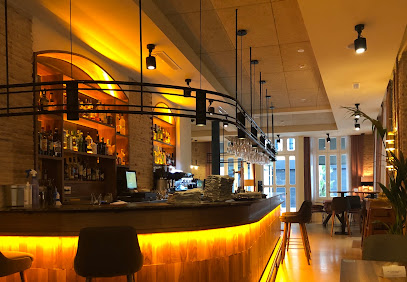
Restaurante RiFF (Pop-up)
Experience the pinnacle of Mediterranean dining at Restaurante RiFF in Valencia, where innovation meets tradition with every exquisite dish.
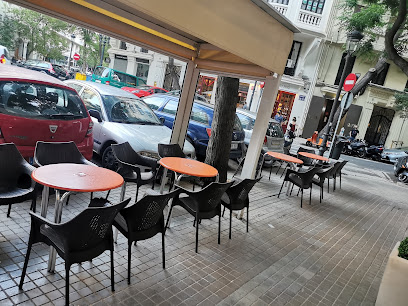
Café de la Bourse Valencia
Discover the exquisite blend of French and Mediterranean cuisine at Café de la Bourse in Valencia's historic Ciutat Vella.
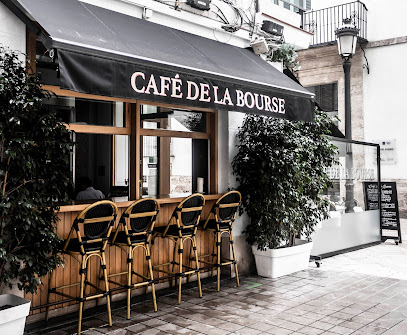
Markets, malls and hidden boutiques
Mon Petit Secret… vintage
Discover the charm of vintage fashion at Mon Petit Secret, Valencia's hidden treasure for unique clothing, accessories, and jewelry.
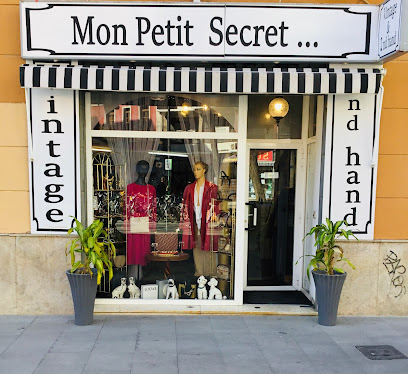
Simple
Discover Simple, a charming gift shop in Valencia's Ciutat Vella, offering unique souvenirs and handmade treasures that capture the city's spirit.
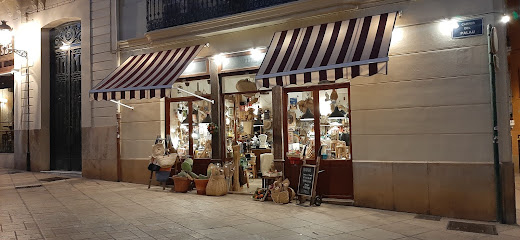
SoHo del Carmen
Discover timeless fashion and unique treasures at SoHo del Carmen, the premier vintage clothing store in Valencia's vibrant Ciutat Vella.
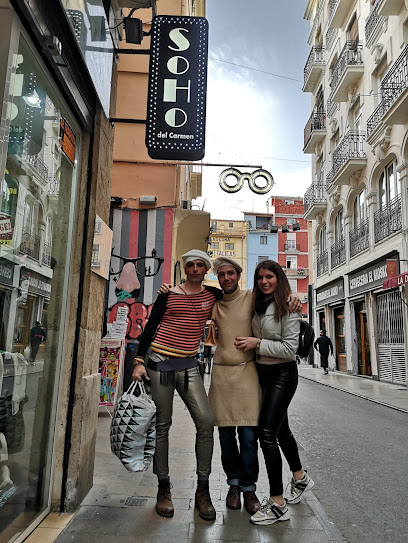
WAKANDA
Explore Wakanda in Valencia for unique gifts, stylish fashion, and unforgettable souvenirs that celebrate local craftsmanship and creativity.
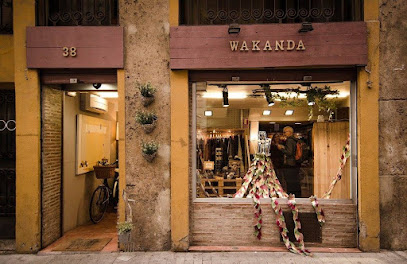
Atypical València
Explore the artistic heart of Valencia at Atypical València, where local craftsmanship meets unique shopping.
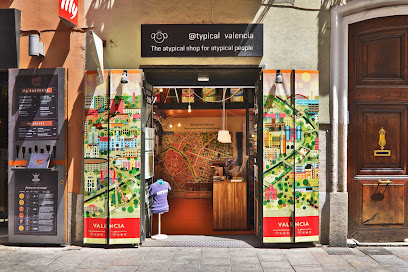
Natura
Explore Natura in Valencia: Your destination for unique gifts, stylish fashion accessories, and beautiful home goods.
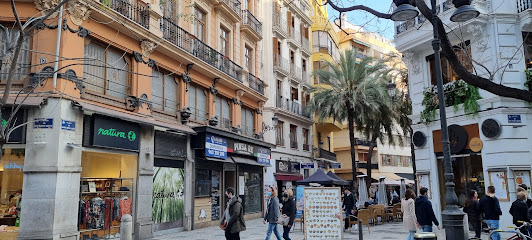
De València
Explore De València in Ciutat Vella for unique gifts and handcrafted costume jewelry that celebrate Valencia's vibrant culture.

La Verge
Explore La Verge, Valencia's charming souvenir store, offering unique crafts and local treasures that embody the spirit of the city.
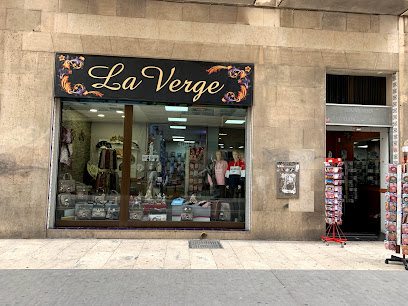
IT SHOP ROPA
Explore IT SHOP ROPA in Ciutat Vella for chic and trendy fashion accessories that reflect Valencia's vibrant style.

Giftshop & Souveniers
Discover the heart of Valencia through unique gifts and souvenirs at this charming gift shop in Ciutat Vella.
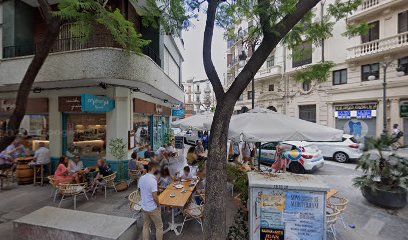
Essential bars & hidden hideouts
Café Negrito
Experience the lively atmosphere and vibrant flavors at Café Negrito, Valencia's favorite pub-café in the heart of the city.
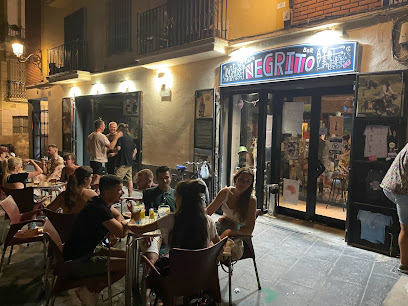
Bar Los Picapiedra
Experience the vibrant flavors of Valencia at Bar Los Picapiedra, your go-to destination for authentic tapas and exquisite wines.

Unic Daily Goodness
Experience the vibrant nightlife of Valencia at Unic Daily Goodness, a lively pub perfect for socializing and sampling local drinks.
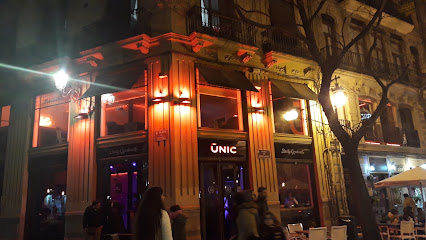
Christopher cócteles
Discover the speakeasy charm of Christopher Cócteles, a cocktail bar in Valencia offering exquisite drinks and a nostalgic ambiance.
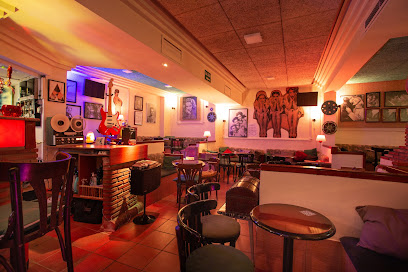
The Lounge
Experience the best of Valencia at The Lounge, where lively sports, Irish pub charm, and delicious tapas come together for an unforgettable night.
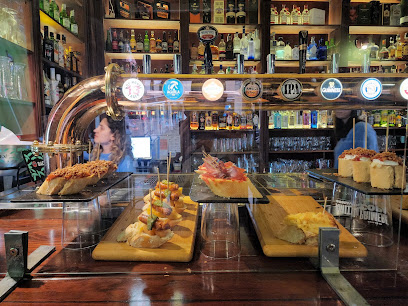
Bar La Terraza
Experience the heart of Valencia's culinary scene at Bar La Terraza, where authentic tapas and vibrant ambiance meet.
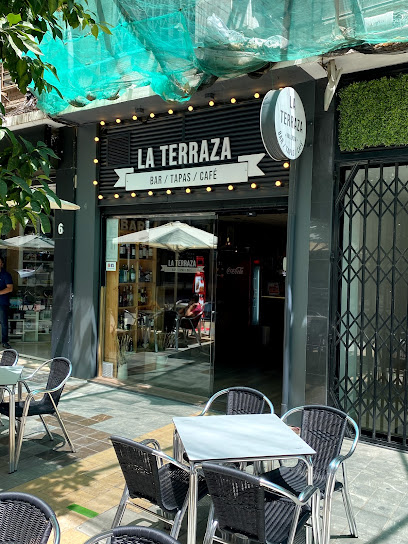
Cool Bar
Experience the vibrant nightlife of Valencia at Cool Bar, where innovative cocktails and delicious tapas create an unforgettable atmosphere.
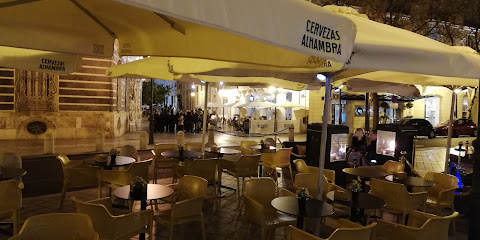
BoBoBar
Experience the heart of Spanish cuisine at BoBoBar in Valencia, where tapas and wine unite in a vibrant atmosphere.
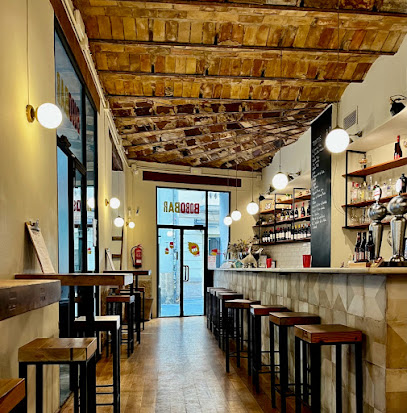
Cuzco Sour Bar
Experience the vibrant cocktail culture at Cuzco Sour Bar in Valencia, where expertly crafted drinks meet a lively atmosphere.
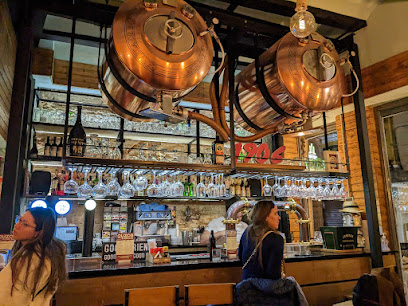
Petit Comité - Valencia
Experience the vibrant atmosphere and exquisite drinks of Petit Comité, a must-visit lounge and wine bar in the heart of Valencia.
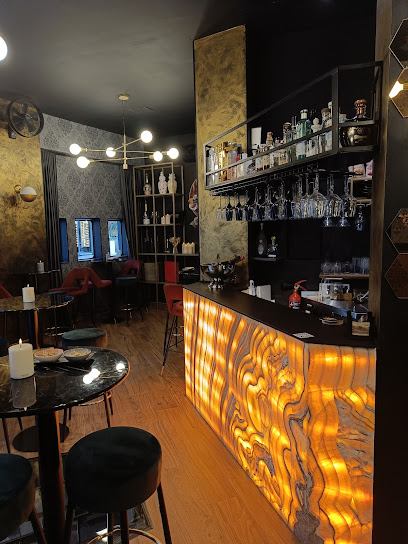
Local Phrases
-
- HelloHola
[oh-la] - GoodbyeAdiós
[ah-dee-ohs] - YesSí
[see] - NoNo
[no] - Please/You're welcomePor favor/De nada
[por fah-vor/deh nah-dah] - Thank youGracias
[gra-thee-as] - Excuse me/SorryPerdón/Lo siento
[pair-dohn/lo see-en-to] - How are you?¿Cómo estás?
[koh-moh eh-stahs] - Fine. And you?Bien. ¿Y tú?
[bee-en. ee too] - Do you speak English?¿Hablas inglés?
[ah-blahs een-glays] - I don't understandNo entiendo
[no ehn-tee-ehn-doh]
- HelloHola
-
- I'd like to see the menu, pleaseMe gustaría ver la carta, por favor
[meh goo-stah-ree-ah ver lah kar-tah por fah-vor] - I don't eat meatNo como carne
[no koh-moh kahr-neh] - Cheers!¡Salud!
[sah-looth] - I would like to pay, pleaseMe gustaría pagar, por favor
[meh goo-stah-ree-ah pah-gar por fah-vor]
- I'd like to see the menu, pleaseMe gustaría ver la carta, por favor
-
- Help!¡Ayuda!
[ah-yoo-dah] - Go away!¡Vete!
[veh-teh] - Call the Police!¡Llama a la policía!
[yah-mah ah lah poh-lee-see-ah] - Call a doctor!¡Llama a un doctor!
[yah-mah ah oon dohk-tohr] - I'm lostEstoy perdido/a
[ehs-toy pair-dee-doh/ah] - I'm illEstoy enfermo/a
[ehs-toy ehn-fehr-moh/ah]
- Help!¡Ayuda!
-
- I'd like to buy...Me gustaría comprar...
[meh goo-stah-ree-ah kohm-prar] - I'm just lookingSolo estoy mirando
[soh-loh eh-stoy mee-rahn-doh] - How much is it?¿Cuánto cuesta?
[kwan-to kwes-tah] - That's too expensiveEsto es demasiado caro
[ehs-toh es deh-mah-see-ah-doh kah-ro] - Can you lower the price?¿Puede bajar el precio?
[pweh-deh bah-har el pree-syoh]
- I'd like to buy...Me gustaría comprar...
-
- What time is it?¿Qué hora es?
[keh or-ah es] - It's one o'clockEs la una en punto
[es lah oo-nah en poon-toh] - Half past (10)Y media (10)
[ee meh-dee-ah (deez)] - MorningMañana
[mah-nyah-nah] - AfternoonTarde
[tahr-deh] - EveningNoche
[noh-cheh] - YesterdayAyer
[ah-yehr] - TodayHoy
[oy] - TomorrowMañana
[mah-nyah-nah] - 1Uno
[oo-noh] - 2Dos
[dohs] - 3Tres
[trehs] - 4Cuatro
[kwah-troh] - 5Cinco
[theen-koh] - 6Seis
[says] - 7Siete
[syeh-teh] - 8Ocho
[oh-choh] - 9Nueve
[nweh-veh] - 10Diez
[dyehth]
- What time is it?¿Qué hora es?
-
- Where's a/the...?¿Dónde está...?
[dohn-deh ehs-tah] - What's the address?¿Cuál es la dirección?
[kwal es lah dee-rehk-syon] - Can you show me (on the map)?¿Puedes mostrarme (en el mapa)?
[pweh-dehs moh-strar-meh (en el mah-pah)] - When's the next (bus)?¿Cuándo es el próximo (autobús)?
[kwan-doh es el proh-kshee-moh (ow-toh-boos)] - A ticket (to ....)Un billete (a ....)
[oon bee-yeh-teh (ah)]
- Where's a/the...?¿Dónde está...?
History of Ciutat Vella
-
The history of Ciutat Vella, the old town of Valencia, dates back to the founding of the Roman city of Valentia in 138 BC. The Romans established the city as a military colony, and remnants of this era can still be seen in structures such as the Roman Theater and the remnants of city walls. The strategic location of Valencia along the Turia River made it a vital trade hub in the Mediterranean.
-
After the fall of the Roman Empire, Valencia was conquered by the Moors in the 8th century, leading to significant cultural and architectural influences that are evident in Ciutat Vella. The city was restructured with narrow winding streets, and notable structures like the Torres de Serranos and the Almodí (the old grain market) were built during this period. The Moors also introduced advanced agricultural techniques that transformed the region's economy.
-
In 1238, Jaume I of Aragon captured Valencia, marking the beginning of the Christian Reconquest. This event dramatically changed the landscape of Ciutat Vella, as churches were built over former mosques, and the city was repopulated with Christians from various regions. The Cathedral of Valencia, which houses the Holy Grail, was erected during this time, blending Gothic and Romanesque architectural styles.
-
The 15th century marked a prosperous period for Valencia, known as its Golden Age. Ciutat Vella flourished with trade, arts, and literature. The Silk Exchange (La Lonja de la Seda), a UNESCO World Heritage Site, was built during this time and reflects the city’s wealth and the importance of silk production in the region. This era also saw the emergence of Valencia as a center of Renaissance culture in Spain.
-
The 19th century brought rapid industrialization to Valencia, impacting Ciutat Vella as well. The construction of new railways and factories transformed the economy and ushered in an era of urban expansion. However, the old town began to face challenges, including overcrowding and the need for modernization. Efforts were made to preserve the historical architecture amidst the changes.
-
In the late 20th century, Ciutat Vella underwent significant revitalization efforts aimed at preserving its historical character while promoting tourism and cultural activities. The area has become a vibrant cultural hub, with numerous museums, galleries, and festivals celebrating Valencia's rich heritage. Events like Las Fallas reflect the unique traditions of the city, drawing visitors from around the world.
Ciutat Vella Essentials
-
Ciutat Vella is centrally located in Valencia and is easily accessible from other neighborhoods. The main public transport options include the Metro, with lines 3 and 5 stopping at the nearby Xàtiva and Colón stations. Buses also connect Ciutat Vella with other parts of the city, with routes frequently running from the Estación del Norte. For those arriving from the airport, the best option is the Metro Line 3, which takes about 20 minutes to reach the city center.
-
Ciutat Vella is best explored on foot due to its narrow streets and pedestrian-friendly layout. Bicycles can be rented from various points throughout the city, and Valenbisi, the city’s bike-sharing service, is a popular choice. Public transport includes buses and trams, with stops conveniently located near major attractions. For longer distances, taxis are available and can be hailed on the street or booked via mobile apps.
-
While Ciutat Vella is generally safe for tourists, it's wise to stay alert, especially in crowded areas like markets and public transport. Petty crimes, such as pickpocketing, can occur, particularly near tourist hotspots like the Cathedral and Plaza de la Virgen. It's advisable to avoid poorly lit areas at night and to keep personal belongings secure.
-
In case of an emergency, dial 112 for police, fire, or medical assistance. The local police stations are located throughout the city, and hospitals are available for medical emergencies. It's recommended to have travel insurance that covers health issues, and pharmacies are plentiful for over-the-counter needs.
-
Fashion: Do dress appropriately, especially when visiting churches; avoid overly casual attire. Religion: Do respect local customs; be quiet and respectful in religious sites. Public Transport: Do use public transport etiquette, like allowing elderly passengers to sit; don’t eat or drink on buses or metros. Greetings: Do greet with a friendly 'Hola' and a smile; don’t be overly familiar with strangers. Eating & Drinking: Do try local dishes like paella and horchata; don’t waste food or be rude to service staff.
-
To experience Ciutat Vella like a local, visit the Mercado Central for fresh produce and local delicacies. Explore the narrow alleys to discover hidden cafes and shops. Engage with locals; many are eager to share their favorite spots. Don't miss out on the vibrant nightlife in the Plaza del Negrito, where locals gather after dark for tapas and drinks. Also, check out the lesser-known museums, like the Museo de la Ciudad, for a deeper understanding of Valencia’s history.
Nearby Cities to Ciutat Vella
-
Things To Do in Teruel
-
Things To Do in Alicante
-
Things To Do in Murcia
-
Things To Do in Tarragona
-
Things To Do in Zaragoza
-
Things To Do in Lleida
-
Things To Do in Palma de Mallorca
-
Things To Do in Huesca
-
Things To Do in Madrid
-
Things To Do in Barcelona
-
Things To Do in Toledo
-
Things To Do in Almeria
-
Things To Do in Segovia
-
Things To Do in Andorra la Vella
-
Things To Do in Escaldes-Engordany

